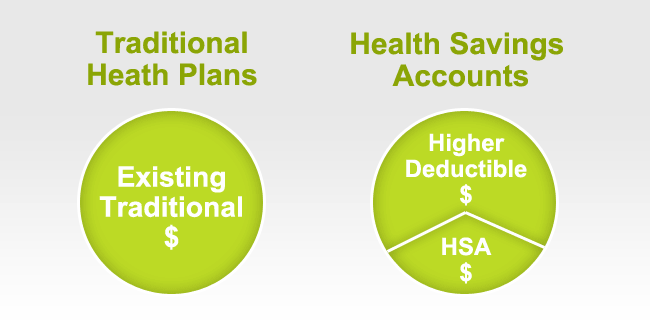The IRS has released the 2020 Health Savings Account (HSA) inflation adjustments. To be eligible to make HSA contributions, an individual must be covered under a high deductible health plan (HDHP) and meet c ertain other eligibility requirements.
New HSA 2020 limits are as follows:
| 2020 | 2019 | |
| HSA Annual Contribution Limit | $3,550 $7,100 | $3,500 – Single $7,000 – Family |
| HDHP Minimum Annual Deductible | $1,400 $2,800 | $1,350 – Single $2,700 – Family |
| HDHP Out-of-Pocket Maximum | $6,900 $13,800 | $6,750 – Single $13,300 – Family |
| Age 55+ Catch-Up Provision | $1,000 $2,000 | $1,000- Single $2,000 – Husband/Wife |
Age 55 Catch Up Contribution-As in 401k and IRA contributions, you are allowed to contribute extra if you are above a certain age. If you are age 55 or older by the end of year, you can contribute additional $1,000 to your HSA. If you are married, and both of you are age 55, each of you can contribute additional $1,000
HSA/HDHP Market Growth
HSA holders own the assets in the accounts and can build up substantial sums over time. Enrollment in HSA-compatible insurance plans has increased to 10 million earlier this year, from 1 million in March 2005, according to, America’s Health Insurance Plans (AHIP), a trade group.
HSAs were authorized starting in January 2004. Since then, AHIP has conducted a periodic census of health plans participating in the HSA/HDHP market.
- The number of people with HSA/HDHP coverage rose to more than 11.4 in January 2011, up from 10.0 million in January 2010, 8.0 million in January 2009, and 6.1 million in January 2008.
- 30 percent of individuals covered by an HSA plan were in the small group market, 50 percent were in the large-group market, and the remaining 20 percent were in the individual market.
- 14% of all workers in the private sector that have access to a Health Savings Account acc. to Bureau of Labor Statistics.
- States with the highest levels of HSA/HDHP enrollment were California, Ohio, Florida, Texas, Illinois and Minnesota.
HSA Advantages:
HSA plans are one of the most tax-effective ways to reduce health insurance costs. The amounts contributed are allowed as a full deduction on your tax return and as long as any amounts taking out of the account are used for medical costs, they are completely tax-free including any earnings.
- Opportunity to build savings – Unused money stays in your account from year to year and earns tax-free interest. The HSA also gives you an investment opportunity.
- Tax-free contributions and earnings – You don’t pay taxes on contributions or earnings.
- Tax Free Money allowed for non-traditional Medical coverage– As per IRS Publication 502, unused moneys can be used for dental, vision, lasik eye surgery, acupuncture, yoga, infertility, etc. Popular Examples
- Portability – The funds belong to you, so you keep the funds if you change jobs or retire.
Our overall experience with HSAs have been positive when employer funding is at minimum 50% using either the HSA or an HRA (Health Reimbursement Account-employer keeps unspent money). Traditional plans trend of higher copays and new in network deductibles has also led to the popularity of an HSA.
RESOURCE:
- 2018 Annual Benefit FSA MaximumsMore on HSA’s –
- Health Savings AccountH.S.A. FAQ’s
- All About H.S.A’s – US TreasuryQualified Medical ExpenseFor a copy of Revenue Procedure 2017-37 please click on the link below: https://www.irs.gov/pub/irs-drop/rp-18-30.pdf


